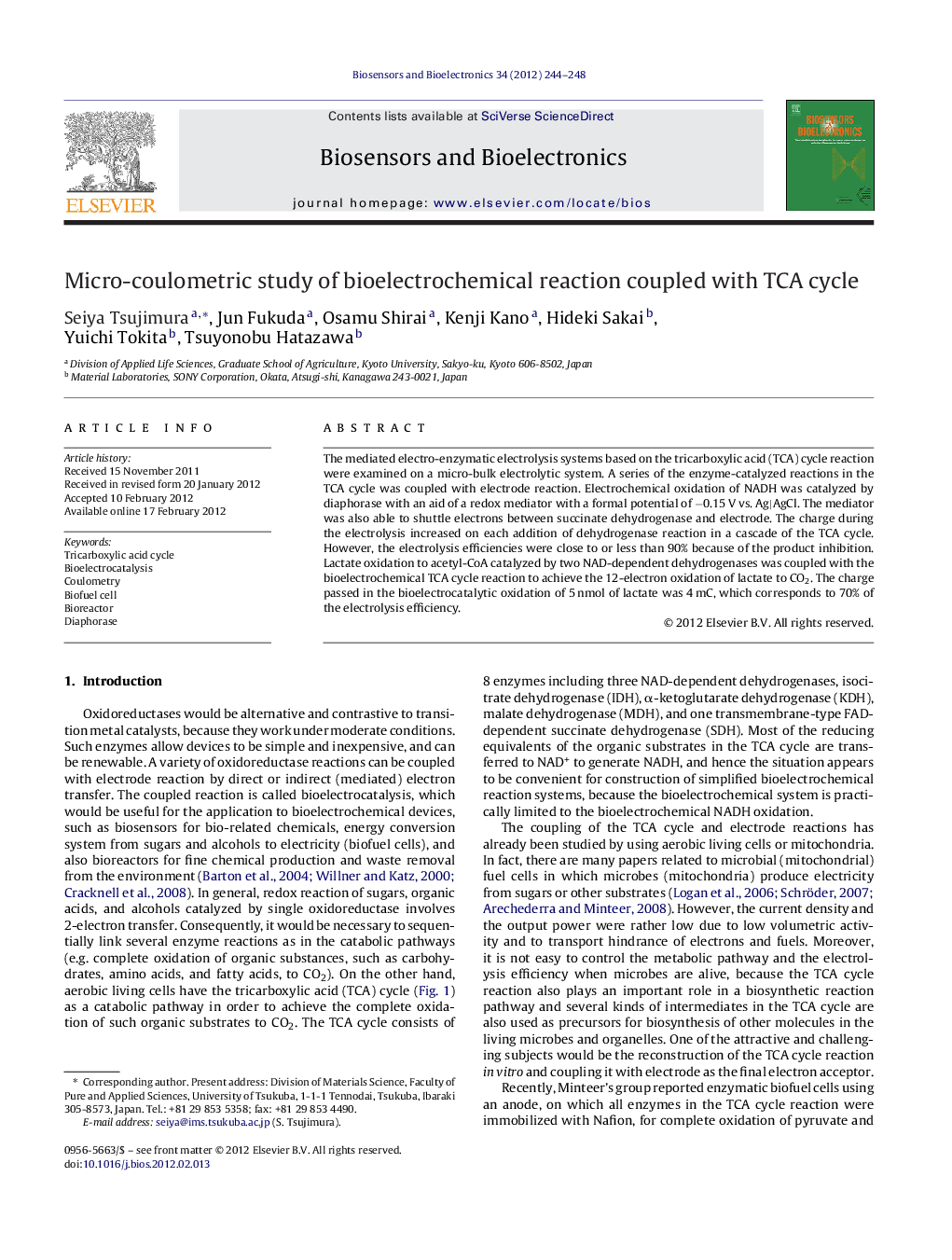| Article ID | Journal | Published Year | Pages | File Type |
|---|---|---|---|---|
| 867472 | Biosensors and Bioelectronics | 2012 | 5 Pages |
The mediated electro-enzymatic electrolysis systems based on the tricarboxylic acid (TCA) cycle reaction were examined on a micro-bulk electrolytic system. A series of the enzyme-catalyzed reactions in the TCA cycle was coupled with electrode reaction. Electrochemical oxidation of NADH was catalyzed by diaphorase with an aid of a redox mediator with a formal potential of −0.15 V vs. Ag|AgCl. The mediator was also able to shuttle electrons between succinate dehydrogenase and electrode. The charge during the electrolysis increased on each addition of dehydrogenase reaction in a cascade of the TCA cycle. However, the electrolysis efficiencies were close to or less than 90% because of the product inhibition. Lactate oxidation to acetyl-CoA catalyzed by two NAD-dependent dehydrogenases was coupled with the bioelectrochemical TCA cycle reaction to achieve the 12-electron oxidation of lactate to CO2. The charge passed in the bioelectrocatalytic oxidation of 5 nmol of lactate was 4 mC, which corresponds to 70% of the electrolysis efficiency.
► Complete oxidation of organic acids using TCA cycle. ► Effects of kinetics and thermodynamics on electrolysis efficiency. ► Quantitative analysis by a coulometry.
